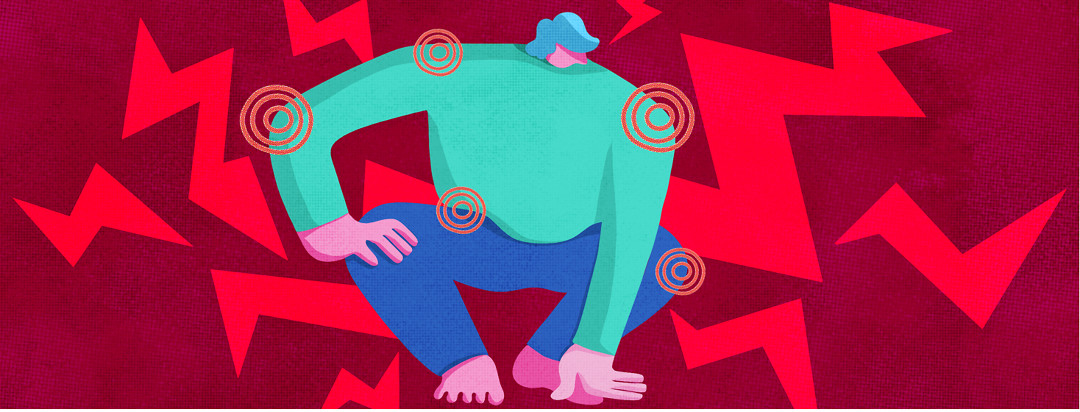Top Lupus Symptoms Include Joint Pain and Fatigue
Lupus can present with many different symptoms and experiences. No two paths with lupus are the same. Differences in severity of symptoms, age of symptom onset, time to diagnosis, and treatment response can all vary greatly.
We recently surveyed hundreds of people with lupus to find out more about their symptoms, and life with lupus in general. The results from our 2020 Lupus In America surveyed revealed that although there are differences in navigating lupus, there are many similarities, too.
Onset of lupus symptoms
Overall, about 1 in 5 survey participants started experiencing symptoms before adulthood (under 18 years old). Another 25 percent started experiencing symptoms between 18 and 29 years old, and a similar amount had their first symptoms between 30 and 39 years old. The remaining 30 percent of participants experienced their first symptoms after 40 years old.
However, one trend seen among people responding to the survey was that age of diagnosis often lagged behind the age of first symptoms. About 70 percent of participants received their lupus diagnosis between the ages of 30 and 60 years old. This delay to diagnosis may be a common experience for many with lupus and may be due to nonspecific symptoms and misdiagnoses along the way.
Although there are some differences in the start of a person’s lupus, they do suggest that most start noticing lupus symptoms earlier in life, regardless of their age at diagnosis.
Most common lupus symptoms experienced
When asked whether or not they experienced lupus-related symptoms in the past month, 100 percent of people said yes. Although specific symptoms can vary, not one person was completely symptom-free. The most common symptom experienced was joint pain and extreme fatigue or tiredness. Over 90 percent of participants reported these over the past month.
The next most common symptoms were experienced by over 60 percent of people and included painful or swollen joints, headaches, swelling in the hands, feet, legs, or around the eyes, and mood issues like anxiety or depression.
Other still relatively common symptoms experienced by at least 40 percent of people included:
- Sores around the mouth or nose
- Sun or light sensitivity
- Hair loss
- Fingers turning white or blue when cold (also called Raynaud’s phenomenon)
- Rash across the cheeks or nose (also called a butterfly rash) or other parts of the body
- Pain in the chest when breathing
Lupus treatments
While there currently is no cure for lupus, there are treatments for some of its more common symptoms. Treatment plans can be quite different for each person, depending on what they are experiencing and the goals of treatment. However, several common treatment options include:
- Pain relievers (including NSAIDs)
- Immunosuppressant drugs
- Steroids
- Antimalarial drugs
- Complementary and alternative medicine
- Lifestyle changes
Your doctor can help you determine what your goals are, and what treatment options might be best in your specific situation.
Overall, these responses show that although there are many differences in lupus symptoms, there are some common trends across all ages. What lupus symptoms do you experience and when did your symptoms start?

Join the conversation